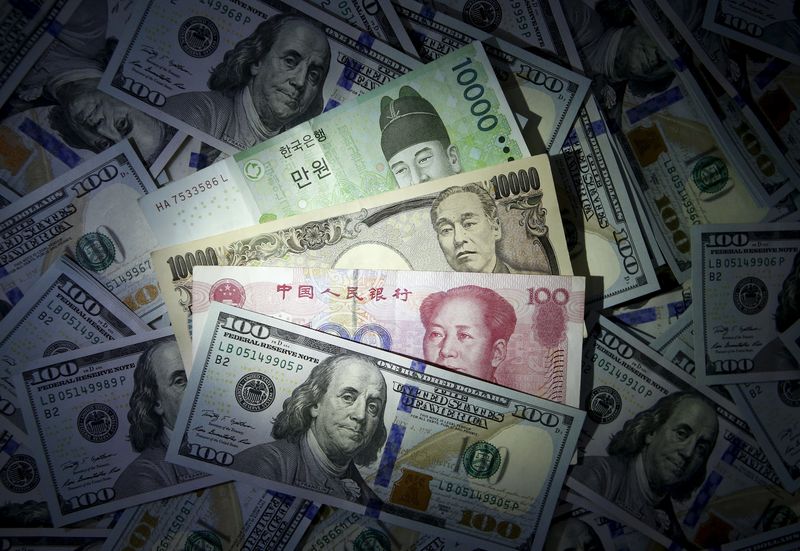By Sumanta Dey
BENGALURU (Reuters) - Emerging Asian currencies are set to weaken further in the coming year, but not as much as thought a few months ago, as expectations the U.S. Federal Reserve will raise interest rates more cautiously hold back the dollar, a Reuters poll showed.
Still, with many Asian central banks continuing to ease policy, the consensus from over 60 analysts polled by Reuters this week was for regional currencies to weaken 2-6 percent by this time next year, with the Malaysian ringgit <MYR=> leading the pack.
"With the Fed delivering a dovish message, Asia FX may continue to perform in the short term. We reckon, however, that the strength is unlikely to hold through the year, and expect some weakness to return," analysts at Citi wrote in a note.
China's yuan has been one of the main sources of global financial market turmoil since last August, when the People's Bank of China devalued it in an attempt to support economic growth as risks of a sharp slowdown began to mount.
The year got off to a volatile start for emerging markets with the Chinese currency sliding again, but since then, Asian currencies have found their footing.
That happened in part when Beijing tried to calm investors by fixing the yuan higher in rapid succession, along with better economic data in developed economies, particularly the United States, that swung sentiment back in favor of riskier assets.
But the closely-managed yuan <CNY=CFXS>, also known as the renminbi, is expected to fall further. Median forecasts from a poll of 65 strategists are for it to ease to 6.58 per dollar by end-June and 6.70 by end-March in 2017, about 3 percent weaker from 6.47 on Thursday.
Only last month, the consensus was for it to fall more than 3.5 percent in 12 months.
Beijing has had to burn through almost half a trillion dollars to support the yuan since the middle of last year. Policymakers have insisted they see no reason for the yuan to depreciate further, which has helped stem huge capital outflows and calm investors.
Morgan Stanley (NYSE:MS) strategists noted: "a one-off devaluation is unlikely, considering the potential risks likely far outweigh the rewards," adding that would likely trigger aggressive currency depreciations by other emerging countries.
With economic growth in China likely to slow to between 6.5 - 7.0 percent this year, coupled with an over-inflated housing market, some strategists have yet to completely write off the risk of another sharp down move on the yuan.
An improved outlook for the Chinese yuan is usually a proxy for currencies of other Asian countries which trade heavily with the world's second-largest economy.
Prospects for the Indian rupee <INR=> and South Korean won <KRW=> have also improved on growing expectations the Fed will deliver fewer rate increases this year. Federal Reserve Chair Janet Yellen's comments last week that the U.S. central bank should proceed cautiously in adjusting policy have caused a broad-based retreat in the dollar.
Minutes of the Fed's March policy meeting, released on Wednesday, also showed widespread concern at the U.S. central bank over its limited ability to weather a global economic slowdown.
"Near term, there are no reasons for a stronger dollar," said Esther Reichelt, foreign exchange strategist at Commerzbank (DE:CBKG).
"The baseline scenario of the Fed envisages that the dollar does not appreciate any further. In the market's opinion, Yellen has thereby confirmed that a stronger dollar will keep the Fed acting cautiously until it feels more certain about its inflation outlook – and that takes time."
The Indian rupee, trading around 66.50 a dollar on Thursday, would fall around 2 percent to 67.60 by end-June and further to 68.00 in a year, the poll showed. Analysts had predicted USD/INR at 69.00 in 12 months in the March survey.
The Malaysian ringgit <MYR=> will likely lead losses and fall 6 percent to 4.17 per U.S. dollar by end-March 2017 from Wednesday's close of 3.914, while the Philippine peso <PHP=>, Taiwan dollar <TWD=> and Singapore dollar <SGD=> are seen weakening about 4 percent.

(For other stories from the FX poll:)